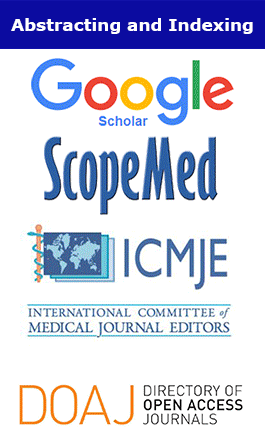Applied Medical Research. 2016;
5(1):(51-161)
Determination of minimum inhibitory concentrations of common biocides to multidrug-resistant gram-negative bacteria
Rajendran Vijayakumar, Mohammad Saleh Al- Aboody, Meshal K. AlFonaisan, Wael Alturaiki, Suresh Mickymaray, Mariappan Premanathan, Suliman A. Alsagaby, Tim Sandle
Abstract
Background: Until now, very few studies have investigated the susceptibility profile of biocides to nosocomial pathogens and none reported in the Saudi Arabia. Hence, the aim of this study was to detect the minimum inhibitory concentrations (MIC) of a range of multidrug resistant (MDR) bacteria: Acinetobacter baumannii, Pseudomonas aeruginosa and Klebsiella pneumoniae against three common hospital disinfectants: chlorhexidine, benzalkonium chloride and cetrimide. Methods: The in vitro susceptibility tests of the three biocides were studied against 21 MDR A. baumannii, 11 MDR P. aeruginosa and 3 MDR K. pneumoniae strains, isolated from various clinical specimens in the Qassim region, Saudi Arabia. The susceptibility testing was performed by broth microdilution method following Clinical and Laboratory Standards Institute guidelines. Results: Among 35 isolates tested, there was no reduced susceptibility observed in A. baumannii and K. pneumoniae, however, two isolates of P. aeruginosa were showed reduced susceptibility (> 512 µg/mL) against benzalkonium chloride and cetrimide. Conclusion: Our observations imply that reduced susceptibility was observed with quaternary ammonium compounds against P. aeruginosa and no apparent relationship exists between specific disinfectants and their multidrug resistance character in A. baumannii and K. pneumoniae. Further studies are required to confirm these results in terms of biocides resistance



